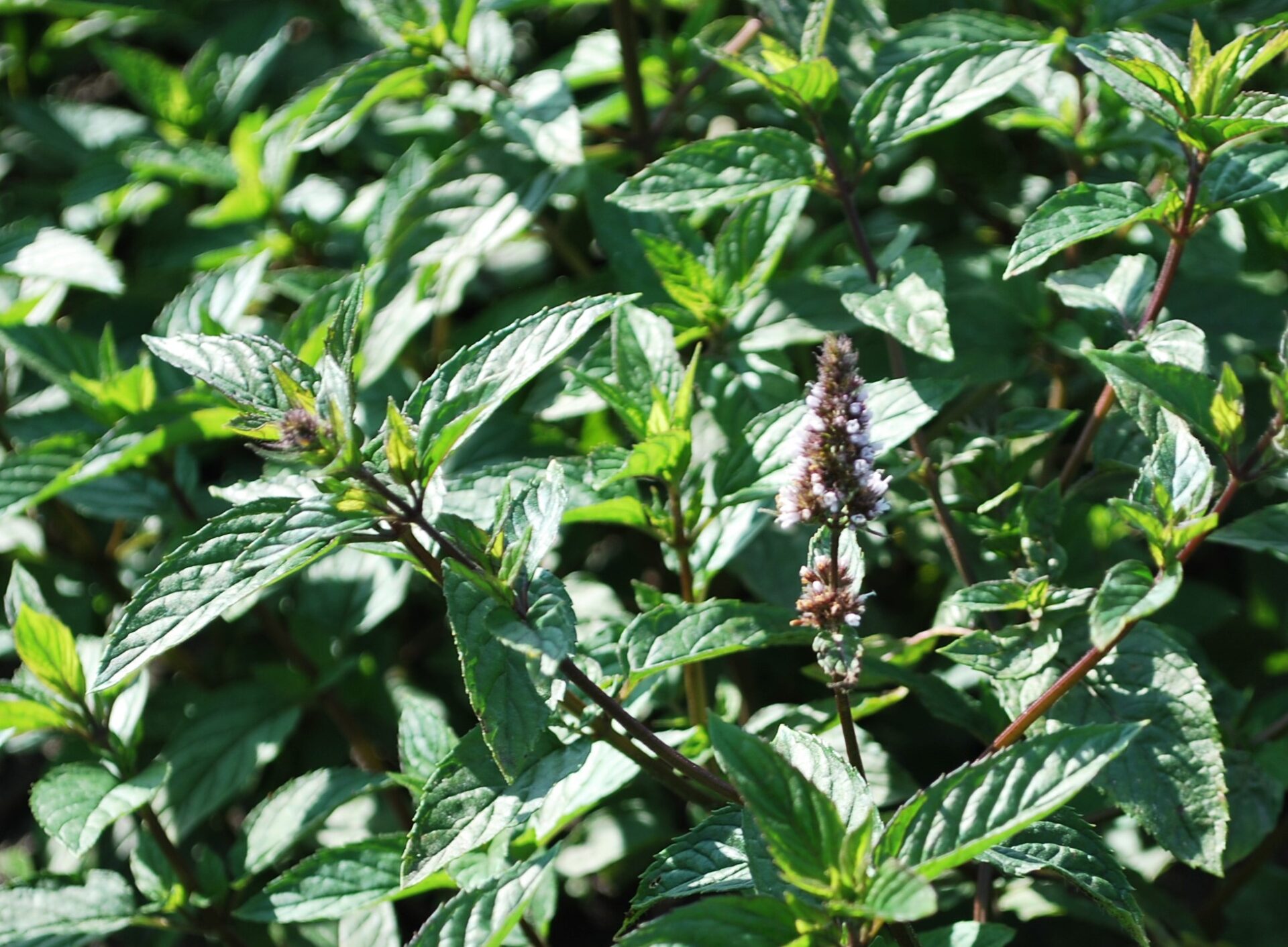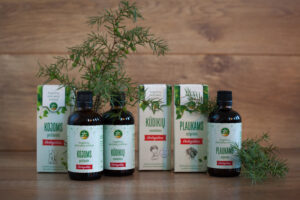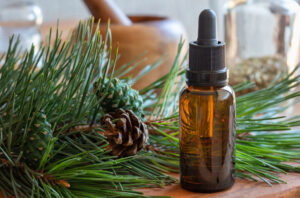The mint genus includes around 30 species. 11 species grow naturally in Lithuania. Peppermint is the most valuable, but it does not grow by itself in Lithuania.
It is even mentioned in the Gospel of Matthew. In general, I have never heard a bad word about mint. Apparently, everyone is chilled by their aroma. In ancient times, mint was believed to drive evil spirits out of the house, so every caring housewife used to plant it.
Peppermint is a perennial, highly aromatic, woody herbaceous plant. The leaves and grass of the plant are cut just before or after flowering for medicinal use. The dried grass has a pleasant smell, astringent, spicy and cooling taste. The dried leaves are dark green, aromatic and have a pleasantly cooling taste. The essential oil content of our peppermint leaves, depending on the variety, is between 1,89 % and 3,44 %, with 32,4 % to 60,9 % % menthol.
It is very important to harvest just when the essential oil is concentrated in the leaves – when the plants flower in August. Grass should be cut when 30-50 % of the plants have flowered. Harvesting takes place on a clear day. The grass clippings are dried in a well ventilated shelter or in a specially equipped drying room, spread in a layer of 6-8 cm on racks or wire netting. Every 2-3 days. If the weather is dry, it dries in 12-15 days. In heated dryers, the temperature must not exceed 25-30 °C. The leaves are separated from the stems after the raw material has been passed through large wire nets.
Although peppermint is a perennial, it can be grown for a maximum of two or, rarely, three years. A new plantation is then established.
The dried leaves should be dark green, aromatic and have a pleasantly cooling taste. The ash content after burning may not exceed 12 %, the moisture content 14 %, the essential oil content not less than 1 %, the stem and inflorescence impurities not more than 5 %, the ultrafine particles not more than 5 % and the organic and mineral impurities not more than 1 %.
Peppermint leaves grown in Lithuania have an essential oil content of 1.89-3.44 %, depending on the variety, and a menthol content of 32.4-60.9 %.
An infusion of peppermint leaves is used for medicinal purposes. It is a sedative, antispasmodic and stimulates bile secretion.
The plant’s active substances have a wide range of effects on the body’s physiological processes. They soothe, relieve spasms, stimulate bile secretion, inhibit microbial growth, relieve pain, and dilate the coronary blood vessels. The main active ingredient is menthol, which is present in peppermint essential oil at about 50 %.
Peppermint essential oil is widely used not only in the pharmaceutical industry, but also in the food, confectionery and perfumery industries.
Folk medicine experts agree that peppermint leaf preparations are antiseptic, soothe pain, relieve spasms, treat inflammation, promote bile secretion… Peppermint also improves appetite, intestinal function, glandular secretion, digestion, protects the body from fermentation and putrefaction, helps with nausea, vomiting and stomach cramps. Peppermint preparations are used for hypersensitivity and insomnia. It gives strength to the heart and banishes headaches.
Peppermint combines with other herbs, so its leaves are added to herbal mixtures to improve digestion, stimulate bile secretion, sweating, relieve pain, and treat heart disease.
Raw or dried mint or peppermint leaves can be added to cottage cheese or meat dumplings, meat or fish dishes, and used to flavour salads and soups.
List of references used:
- Butkus, V., et. al. Small forest treasures. Vilnius: Mokslas 1987.
- Čekauskaitė, L. Nature’s Pharmacy. Kaunas: Spindulys, 2003.
- Kaunienė, V.; Kaunas, E. Medicinal plants. Handbook. Kaunas: Varpas, 1991.
- Obelevičius, K; Petkevičiūtė, S; E. Šeinauskienė, E. Handbook of spice plants and their uses. Kaunas: Lututė, 2011.
- Ragažinskienė, O.; Rimkienė, S.; Sasnauskas, V. Encyclopaedia of medicinal plants. Kaunas: Lututė, 2005.





